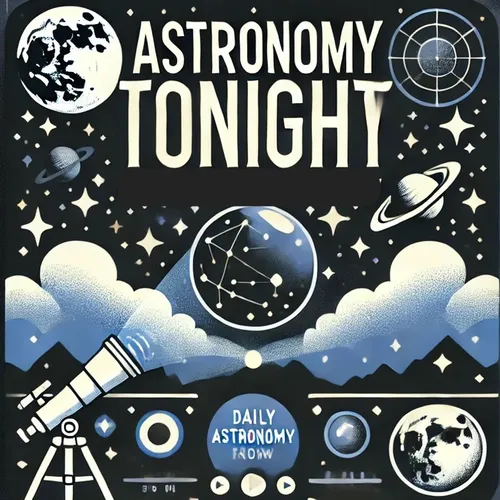Astronomy Tonight for - 12-05-2024
- Author
- Inception Point Ai
- Published
- Thu 05 Dec 2024
- Episode Link
- https://www.spreaker.com/episode/astronomy-tonight-for-12-05-2024--63163482
Ah, December 5th! A date that sparkles in the astronomical calendar like a supernova in the night sky. Let me take you back to December 5, 1974, a day that would forever change our understanding of the cosmos and give us a new perspective on our stellar neighborhood.
On this day, the Pioneer 11 spacecraft made its closest approach to Jupiter, swooping within 26,600 miles of the gas giant's cloud tops. This daring flyby was a cosmic dance of epic proportions, with Pioneer 11 pirouetting around the largest planet in our solar system at a breakneck speed of 107,373 mph!
Picture, if you will, this intrepid explorer – no bigger than a car – hurtling through space, braving Jupiter's intense radiation belts and magnetic fields. As it whizzed by, Pioneer 11 snapped photos and collected data that would make astronomers back on Earth giddy with excitement.
The spacecraft's cameras captured stunning images of Jupiter's swirling clouds, including the first close-up views of the Great Red Spot – that enormous storm that's been raging for centuries. It was like getting a front-row seat to the greatest show in the solar system!
But Pioneer 11 didn't stop there. Oh no, it was just warming up! The gravity assist from Jupiter flung the plucky probe onwards to Saturn, making it the first human-made object to visit the ringed planet.
This flyby was a game-changer. It provided us with crucial information about Jupiter's intense radiation environment, helping pave the way for future missions like Voyager and Galileo. It also gave us our first taste of what it would be like to send spacecraft to the outer solar system.
So, the next time you look up at Jupiter twinkling in the night sky, give a little nod to Pioneer 11 and its historic flyby on December 5, 1974. It's a reminder that with a bit of human ingenuity and a lot of cosmic chutzpah, we can dance with the giants of our solar system and uncover the secrets of the universe!
This content was created in partnership and with the help of Artificial Intelligence AI
